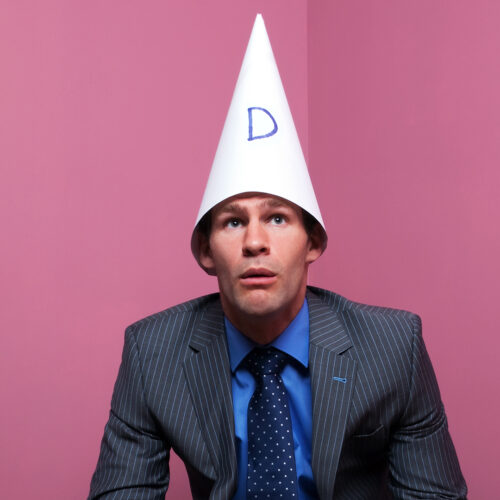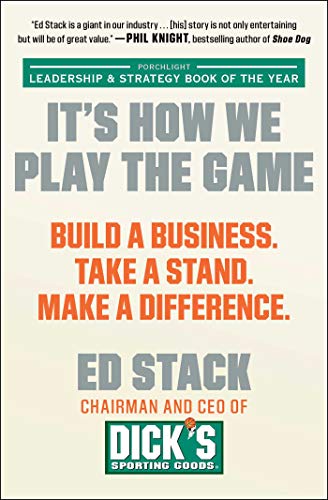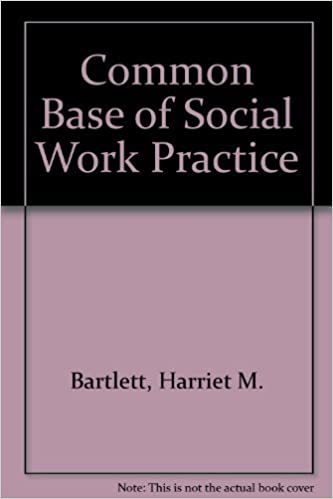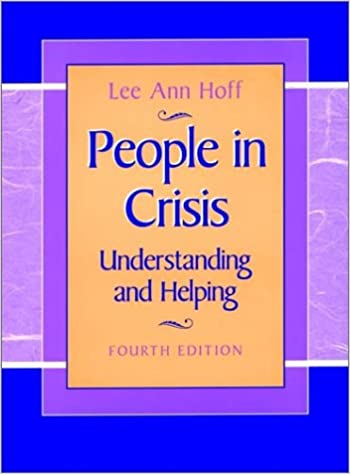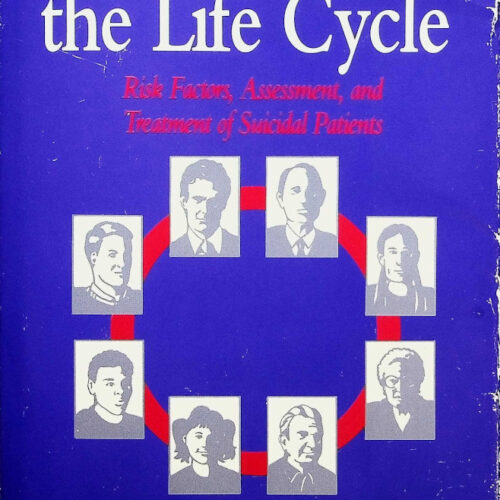Robert Bogue
March 31, 2023
No Comments
A crisis is a temporary inability to cope by means of our normal problem-solving devices. People in Crisis: Understanding and Helping is designed to teach the means by which we can help people through their crises and to reach the other side by helping them better process their circumstances.
Danger and Opportunity
Crises are inflection points. They’re points where there is great danger and threat of an inability to process or recover – and, simultaneously, they’re the threshold of opportunity. The Chinese symbol for crisis is formed by the symbols for danger and opportunity. The first step in a crisis is to help people see past the danger of the situation and to recognize the opportunity that is a part of the crisis.
Identity Issues
One of the key kinds of crises that people face are crises of identity. Erik Erikson in Childhood and Society outlines a set of stages that he believes children go through. Each of these stages causes us to alter our internal view of our identity, and therefore these transitions are periods of identity crisis of varying intensity.
We also face identity issues when we are not able to reconcile the way that we’re behaving with our ideal versions of our identity that we hold. In How We Know What Isn’t So, Thomas Gilovich explains how we’re able to delude ourselves about our grandeur. Sometimes, the gap in our self-perception is pointed out to us in ways that cannot be ignored. Kim Scott, in Radical Candor, advises us to be direct in ways that can make it impossible for us to ignore the discrepancy between our identities and the results we’re seeing. This all leads to a crisis of identity that may be small or may be large.
Blame the Victim
One of the negative aspects of our culture today is the tendency for us to blame the victim for their misfortune. You may have heard “ye of little faith” as a subtle attack on the piety of others. It was believed that misfortune befell those who were in God’s disfavor. Today, we have a view that bad things happen to good people, and misfortune happens to all of us. Despite this, we still will tend to wonder what someone has done to deserve their fate.
Albert Bandura calls this “victim locus” in Moral Disengagement, and he doesn’t believe it’s a good thing. It unfairly judges people when they’ve done nothing wrong. The Halo Effect explains that we live in a probabilistic, not a deterministic, world. That means bad things can happen to good people. Sometimes, there isn’t someone to blame – even if that make us feel more comfortable. We want the perception that we have control of the outcomes that befall us – even if that control is an illusion.
Perception Matters
Compelled to Control makes it clear that control is an illusion. Despite this, it’s an illusion that we like and want to keep. Numerous studies have shown that we have less distress with unpleasant situations when we believe that we can stop them at any time. Whether we can stop or have influence on the situation makes little difference. What makes the difference is that we believe we have control. (See The Hope Circuit for more.)
The reach of perception extends beyond simply the perception of control. If we are willing to perceive that our circumstances are neutral or good, then we’ll feel happier. We’re not talking about delusional thinking. We’re talking about intentionally shifting your perception towards a place of acceptance of the circumstances and reveling in the positives, as Rick Hanson explains in Hardwiring Happiness.
Navigating the Crisis Maze
We build mental maps and models of our world. Gary Klein in Sources of Power explains how firefighting captains have learned how fires work. They have a model for fires, and it’s disconcerting when their models predict that things will happen, but they don’t. Sir Conan Doyle’s Sherlock Holmes character would call it “the dogs that don’t bark.” It’s a small thing but a noticeable one. The fire captains generally pull people back and build a new working model for the fire – hopefully, a better one.
Crises generally involve one or more fundamental beliefs that have been called into question or destroyed. A parent that loses a child must release the “natural order” argument that they’ll die before their children. It’s a fundamental – if unstated – part of the rules of living and a significant portion of the mental map. More impactful is the couple who have lived together for decades and one person dies – or chooses divorce. The map of the world had adapted to having the other person in it – and now it has to adjust to their absence.
It’s no wonder why being in crisis is so disorienting. Our way of navigating the world is broken or bent, and we’re not sure what parts of our mental map we can and cannot use. Navigating a world that has become a new and uncharted maze is very scary, and it’s why people coming alongside us during a crisis makes it better – particularly if they seem to know how to navigate the maze.
Replacement Families
In an ideal world, we’d have ideal families and would have developed secure attachment patterns. (See Daring to Trust.) We’d have families who loved us unconditionally and never judged us. They’d be ever-present when we needed them. However, we don’t live in an ideal world. In fact, there are few constants more real than the fact that all families have their own dysfunctions. Every family has aspects that don’t work well – but we’ve adapted, because that’s the way they are.
Increasingly, we’re finding ways of augmenting our social connection needs with friends. Our friends become our replacement families. When we need the support that a family might have at one time provided, we lean on friends instead. Certainly, things are changing in our social capital relationships. Robert Putnam explained this decades ago in Bowling Alone and more recently in Our Kids. Sherry Turkle explains in Alone Together how our dependence on technology has made us more connected – yet less personally connected.
The good news of all of this is that it’s easier for people to find support in other ways when their families aren’t able to support them the way they need to be supported.
Sick Role
It’s sometimes too easy to find others to help us. It starts to make the role of being sick too desirable and too easy to get into. When someone identifies themselves as ill – or they’re identified as ill by others – they’re automatically granted certain graces that wouldn’t normally be available. No one expects people who are ill to split wood and bring it inside to man the fire. Instead, we grant them a pass and pick up the load.
There’s a delicate balance in play here that often gets out of whack. We should allow people time to heal, and we should support them – as we would want to be supported. However, at some point, we need to get people out of the sick role so they can work on healing and returning to fully functional members of the society. One of the keys to getting someone out of a sustained crisis is to help them release their victim role. We need to help them find a way to tentatively return to the fully productive world of accountability.
The Power of Caring and Sharing
When you’re looking at how you can help people in crisis, the answers may be unsatisfyingly simple. It can be that the best way to help someone is simply to let them know that you care and to listen to them share. If you look at the research about the efficacy of psychotherapy, there’s one clear factor that matters more than anything else. It matters more than the type of technique you use or where you got your training. The Heart and Soul of Change explains that it’s the therapeutic alliance: how much you connect with and believe that your therapist really cares.
You don’t have to be a therapist to connect with other humans, and that can be a powerful way of radiating healing. In Why and How 12-Step Groups Work, I explained that much of the power of the groups is the new communities that form around people.
The appropriate strategies for sharing can be equally helpful. Whether you use Motivational Interviewing or something else as a strategy to engage people in the process of telling their story, there’s something to it.
Suicide by Cop
Sometimes, direct strategies don’t work. The genetic drive for self-preservation can be a difficult thing to get past even for those determined to die. Sometimes, self-preservation diverts things into behaviors that are harmful in the long term – but aren’t immediately life threatening. People have taken up alcohol, overeating, and drugs in an attempt to soothe their pain but also to create a scenario where their death is more likely. Sometimes the strategies for indirect self-harm involve other people.
I remember the first time I heard it. My brother-in-law at the time was a cop, and we had just watched a news story about an officer-involved shooting in his basement. I didn’t really think that it was all that interesting when he told me that it was an officer-assisted suicide – and later “suicide by cop.” When I asked more about it, he shared that people will provoke officers to the point where they have little or no choice but to shoot – and kill – them. Afterwards, they’d learn that the gun wasn’t loaded or wasn’t real, but the person who ultimately would die would intentionally create the perception of a real threat.
People in crisis – who want to die but aren’t able to do the degree of self-harm necessary – often do strange things. Sometimes, it’s simply risky behaviors; other times, it’s intentionally provoking their death.
Intimate Partner Violence
The degree to which women are harmed by domestic partners – or intimate partners – is staggering. The research seems to suggest that the problem has been going on since the earliest days of humanity and that it’s finally being discussed more. That doesn’t make it better. One of the key questions that gets asked is, “Why doesn’t she just leave?” The answer to that is complicated.
In Divorce, we learned that most women’s economic status decreased after a divorce. In short, they’re less capable of meeting their basic needs than they were when they were married. It’s also true that, before divorce laws were changed in the US, it was harder to get a divorce without a clear reason. Of course, not all intimate partners are married, but there’s a clear answer that the economics of the situation may play a role.
The more tragic version of this story is that, despite protective orders and social protections, women who leave are often those who are harmed. Their departure creates an anger in their partner that erupts into violence. That violence can visit upon them as a murder-suicide or simply battery, and it can happen no matter where they reside.
Shame
One of the things that hold people in crisis is a sense of shame. Coming across a situation that you don’t know how to process is natural, but when you start to focus on judging yourself for the situation, it becomes harder to resolve. Certainly, there are situations of our own making. We make bad decisions, and we end up with consequences that we don’t like. We can feel guilty for those bad decisions, but when it changes from we made a bad decision to we are a bad person, there’s a problem. (See I Thought It Was Just Me (But It Isn’t) for more on the difference between guilt and shame.)
Bad things happen to good people. It’s simple truth, but it’s sometimes hard to accept when you believe that you had a hand in the circumstances that you’re in. This is particularly hard if you’ve been struggling with the same sets of behaviors and feel as if you’re continuing to do the things that you rationally don’t want to do.
Few people have heard about Jonathan Haidt’s Elephant-Rider-Path model, which explains that our rational beliefs are a tiny rider on top of a huge, emotional elephant. (See The Happiness Hypothesis and Switch for more.) The rider believes he’s in control, but the elephant always wins when he wants to. We make rational decisions to lose weight or stop drinking, but our emotional elephant has different plans. Our rational rider holds the reins with all the willpower they have but eventually loses their grip. (See Willpower for more about willpower.) Sometimes, losing the grip means that we feel ashamed that we can’t keep from the thing we don’t want.
We forget that willpower is exhaustible, and if we don’t change the systems around us and deal with the emotional hurt that drives us to the bad behaviors, we’re unlikely to permanently resolve the bad behavior. That’s nothing to be ashamed of. It’s something to recognize, but it’s often shame-inducing for some.
Opening Pandora’s Box
Helpers’ discomfort with certain topics can prevent people from getting help. Abuse, suicide, death, and other difficult topics aren’t the kind of things that anyone wants to discuss – but sometimes we need to discuss them, especially if we want to be helpful. Helpers often fear that, by asking difficult questions, they’ll “open Pandora’s box,” causing harms to spill into the conversation, the relationship, and the world. While opening up the discussion on these sorts of difficult topics can require a bit of time to address well, it’s not like these things are contagious.
The way to talk about any difficult topic is to address it directly. The advice, from The End of Hope and others, is to open up about secrets. Not talking about a topic doesn’t make it go away – it only makes it fester in hiding.
Learning, Earning, and Returning
One of the perspectives of human lifecycle is that it’s three phases. There’s a phase of learning – perhaps through the time of college. There’s a phase of earning, where you’re earning a living, making money, and generally striving. The final phase – retirement – is a phase of returning. It’s a time of your life when you make an attempt to give back to and support others. Retirement is often seen in the US as an opportunity to kick back and relax. It’s a time to stand by and watch the rat race.
These three phases are punctuated by crises between them. Deciding how to make money, to take the leap into a corporate rather than educational environment is challenging. So, too, is the transition into retirement and the awareness that you’re no longer earning money, or at least not much money.
The way to find meaning in this last transition is to discover your why. Simon Sinek in Start with Why and Clayton Christensen in How Will You Measure Your Life? explain the importance of having a purpose for your life.
Death of a Child
The worst thing in my life to date is the death of our son. However, it’s more than the acute loss that I feel because Alex is no longer here. There’s another aspect. It violates the way that the world should work – or that I understand the world should work. No parent should have to bury their child. When you lose a child, you not only face the loss, but you must also contend with the fact that the world doesn’t work the way that you believe it should work.
It doesn’t require the death of a child to be in crisis. However, sometimes that’s the reason why you find People in Crisis.
